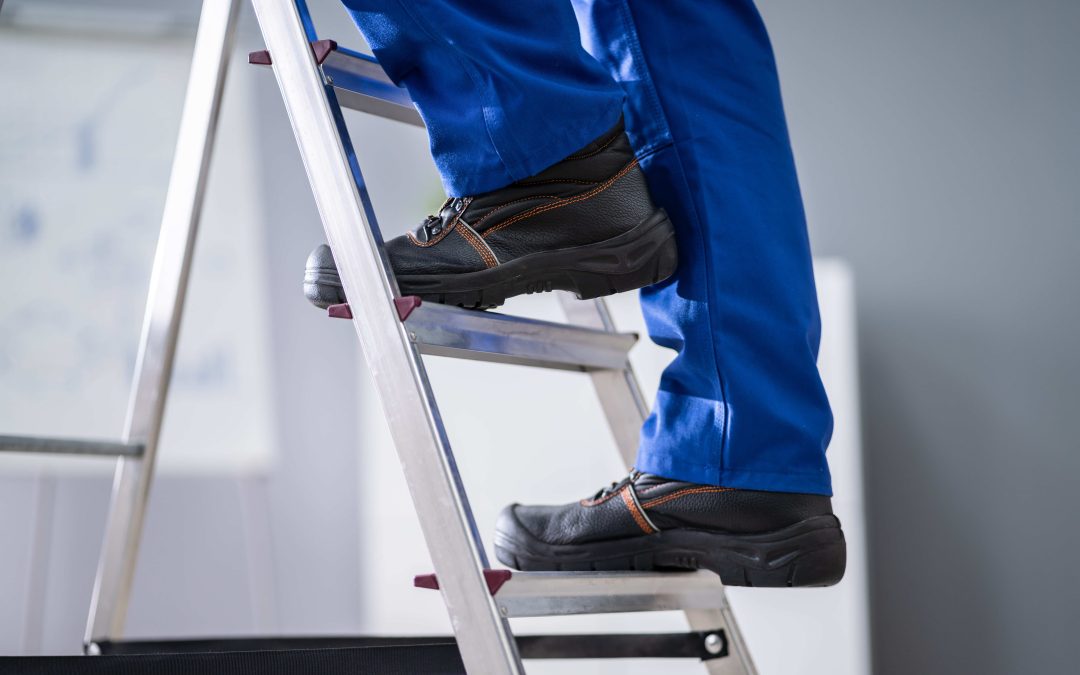When it comes to general safety, ladders present a significant amount of risk. Unfortunately, the United States leads the world in ladder deaths, with 300 deaths and 164,000 injuries a year resulting from ladders. What’s more, 43% of fatal falls have involved a ladder. These sobering statistics make it clear that proper ladder safety is imperative.
Once a ladder is in use, the user’s risk of falling from that ladder is high. Selecting the right ladder, inspecting a ladder every time before use, and removing defective ladders from service are all ways to mitigate that risk. In this blog, we’d like to cover how to reduce ladder risk by properly inspecting a ladder before it is used.
Note: Before we get into the contents of this blog, it is important to note that construction and other specialized industries have different requirements than these general industry standards. For more information on general industry training, please check out eSafety’s full course library.
When Should You Inspect A Ladder?
You should perform a ladder inspection every time you plan to get on a ladder. Inspections should always be completed before use. Ladder inspections should also be performed immediately after a ladder is dropped or tipped over.
Ladder Inspection Requirements: What to Look For
In any general-use application, there are ladder inspection requirements that all users should follow before climbing up. Use these requirements as a guide when completing your ladder inspection.
01. Inspect Ladder Rungs.
- Before you step on a ladder, look for loose, movable, broken, or missing ladder rungs or steps.
- Ladder rungs or steps must be corrugated, dimpled, coated with skid-resistant material, or treated to minimize slipping.
02. Inspect Ladder Side Rails.
- Ladder side rails must be in good condition.
- Check for cracked, loose, or broken side rails that indicate the ladder is not safe for use.
03. Inspect the Bottom of any Portable Ladder.
- All portable ladders should have safety feet.
- These feet, which are usually rubber, work to grip the ground and keep the ladder from slipping while you are working.
04. Inspect All Connecting Elements.
- Bolts, screws, rivets, and nails should all be tight and in good condition.
05. Remove or Cover Any Sharp Points.
06. Make Sure the Ladder is Clean.
- Grease, oil, and dirt are all hazards that can cause you to lose grip or footing.
07. Consult the Ladder Manufacturer Regarding Specific Use Cases.
- If you are ever unsure of where or when a ladder can be used, always consult the manufacturer before use.
- For example, if you need to use a ladder in a corrosive or chemical environment, first make sure to consult the manufacturer to ensure you choose the correct ladder for the conditions.
Additional Inspection Requirements for Step Ladders
In addition to the above inspection requirements, if you are using a step ladder, make sure to ask yourself:
- Are hinges tight?
- Are hinge spreaders straight?
- Do hinge spreaders stop function correctly?
- Will the spreader device hold the ladder securely in the open position?
If you answer no to any of these questions, the ladder should not be used.
Additional Inspection Requirements for Extension Ladders
In addition to the above inspection requirements, if you are using an extension ladder, make sure to check that:
- Locks are not broken, bent, or twisted and all function correctly.
- Rope does not show signs of wear, fraying, or cuts.
- Movable parts operate freely without binding or undue play.
- All bearings of locks, wheels, pulleys, and other moving parts are adequately lubricated.
If you answer no to any of these questions, the ladder should also not be used.
What Should You Do If You Discover Signs of Damage During Your Ladder Inspection?
If you discover any signs of damage during your ladder inspection, the ladder should NOT be used.
Temporary repairs and quick fixes are not suitable. Given the high risk that ladders present for falls, injury, and even death, any sign of damage is enough to remove the ladder from use.
If you discover ladder damage:
- Immediately tag the ladder with a “Danger” tag to indicate it should not be used.
- If the ladder can be prepared, it should be properly repaired as soon as possible.
- If repairs are not possible, the ladder must be thrown away or disposed of immediately.
Ladder inspection is an important part of reducing the risk of injury or fall when using a ladder. If you’d like to learn more about ladder safety, we recommend eSafety’s Ladder Safety Course. Or, if you’re looking for more ways to improve your workplace safety training program, take a tour of our online safety training platform to see how it can accommodate your unique safety training needs.

